Serving temperature Hot | Place of origin Philippines | |
Main ingredients Variations some sugar for sweet-salty taste Similar Sinigang, Pancit, Sisig, Kaldereta, Lumpia | ||
Philippine Adobo (from Spanish adobar: "marinade," "sauce" or "seasoning") is a popular dish and cooking process in Philippine cuisine that involves meat, seafood, or vegetables marinated in vinegar, soy sauce, and garlic, which is browned in oil, and simmered in the marinade. It has sometimes been considered as the unofficial national dish in the Philippines.
Contents
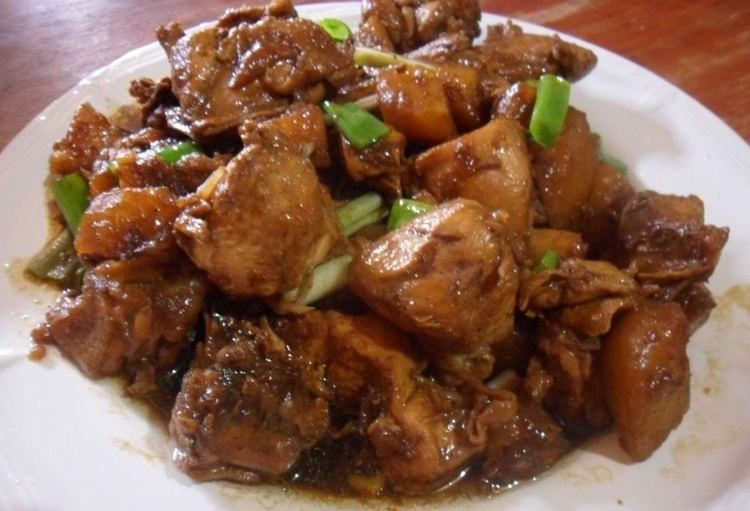
History
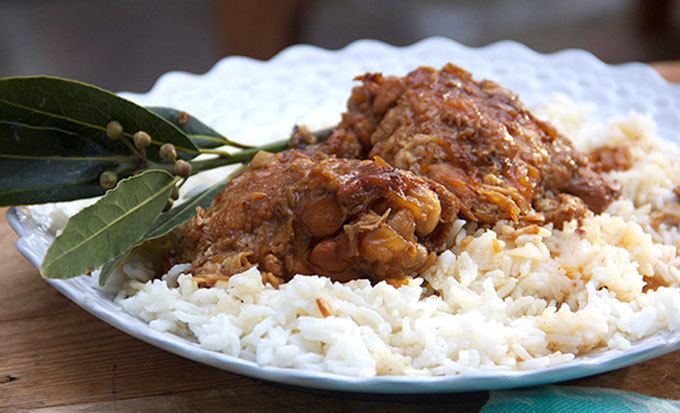
Taken from the early Spanish, the cooking method is indigenous to Spain. Early Spaniards cooked their food normally by roasting, steaming or boiling methods. To keep it fresh longer, food was often cooked by immersion in vinegar and salt. Thus, it is very likely that Filipinos could have been cooking meat in vinegar as a means of preservation. This process dates back to the Pre-Hispanic Period and was used for pork and chicken.
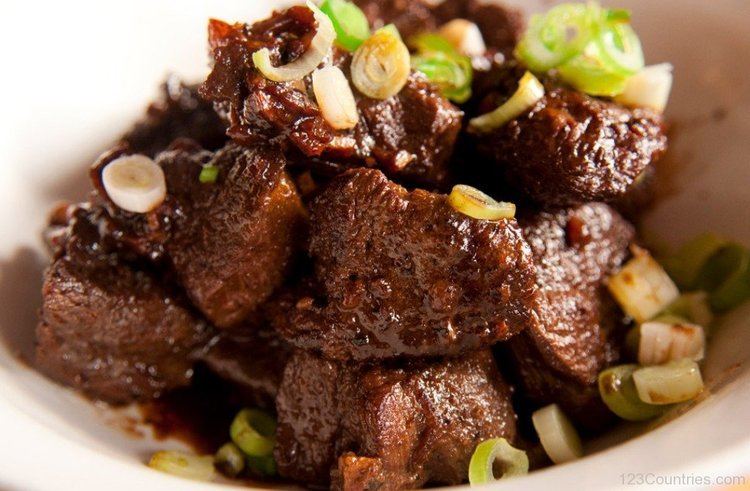
When the Spanish Empire colonized the Philippines in the late 16th century and early 17th century, they encountered this cooking process. It was first recorded in the dictionary Vocabulario de la Lengua Tagala (1613) compiled by the Spanish Franciscan missionary Pedro de San Buenaventura. He referred to it as adobo de los naturales ("adobo of the native peoples"). Dishes prepared in this manner eventually came to be known by this name, with the original term for the dish now lost to history.
Description
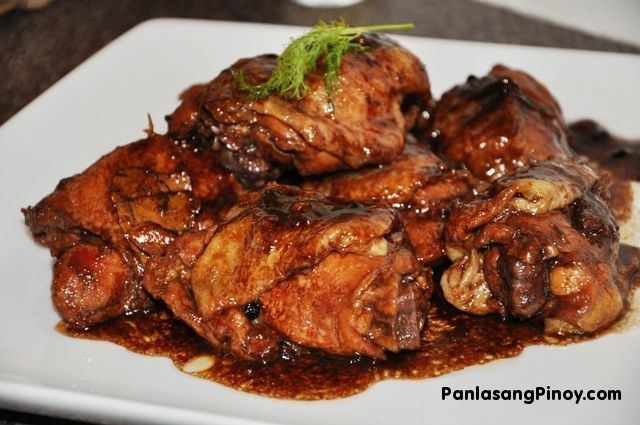
While the adobo dish and cooking process in Filipino cuisine and the general description of adobo in Spanish cuisine share similar characteristics, they refer to different things with different cultural roots. While the Philippine adobo can be considered adobo in the Spanish sense—a marinated dish—the Philippine usage is much more specific to a cooking process (rather than a specific recipe) and is not restricted to meat. Typically, pork or chicken, or a combination of both, is slowly cooked in vinegar, crushed garlic, bay leaves, black peppercorns, and soy sauce. It is served with white rice. It was traditionally cooked in small clay pots (palayok or kulon); but in modern times, metal pots or woks (kawali) are used instead.
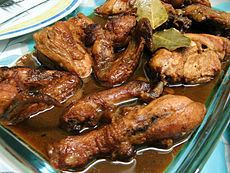
There are numerous variants of the adobo recipe in the Philippines. The most basic ingredient of adobo is vinegar, which is usually coconut vinegar, rice vinegar, or cane vinegar (although sometimes white wine or cider vinegar can also be used). Almost every ingredient can be changed according to personal preference. Even people in the same household can cook adobo in significantly different ways. A rarer version without soy sauce is known as adobong puti ("white adobo" or "blond adobo"), which uses salt instead, to contrast it with adobong itim ("black adobo"), the more prevalent versions with soy sauce. Adobong puti is often regarded as the closest to the original version of the Pre-Hispanic adobo. It is similar to another dish known as pinatisan, where fish sauce (patis) is used instead of vinegar.
The proportion (or even the presence) of ingredients like soy sauce, bay leaves, garlic, or black pepper can vary. Other ingredients can sometimes be used; like siling labuyo, bird's eye chili, jalapeño pepper, red bell pepper, olive oil, onions, brown sugar, potatoes, or pineapple. It may also be further browned in the oven, pan-fried, deep-fried, or even grilled to get crisped edges.
There are also regional variations. In southern Luzon and Muslim Zamboanga, for example, it is common to see adobo cooked with coconut milk (known as adobo sa gatâ). In Cavite, mashed pork liver is added. In Laguna, turmeric is added, giving the dish a distinct yellowish color (known as adobong dilaw, "yellow adobo").
Based on the main ingredients, the most common adobo dishes are adobong manok, in which chicken is used, and adobong baboy, in which pork is used. Adobong baka (beef), along with adobong manok, is more popular among Muslim Filipinos. Other meat sources may also be used, such as adobong pugô (quail). There are also seafood variants which can include fish (adobong isda), catfish (adobong hito), shrimp (adobong hipon), and squid or cuttlefish (adobong pusit). It can even be used to cook vegetables and fruits, like water spinach (adobong kangkong), bamboo shoots (adobong labong), eggplant (adobong talong), banana flowers (adobong pusô ng saging), and okra (adobong okra). Even more exotic versions include adobong sawâ (snake), adobong palakâ (frogs), Kapampangan adobung kamaru (mole crickets), and the adobong atay at balunbalunan (chicken liver and gizzard).
Adobo has been called the quintessential Philippine stew, served with rice both at daily meals and at feasts. It is commonly packed for Filipino mountaineers and travelers because it keeps well without refrigeration. Its relatively long shelf-life is due to one of its primary ingredients, vinegar, which inhibits the growth of bacteria.
Other uses
Outside of the dish itself, the flavor of adobo has been developed commercially and adapted to other foods. A number of successful local Philippine snack products, such as nuts, chips, noodle soups, and corn crackers, market their items as "adobo flavored".
